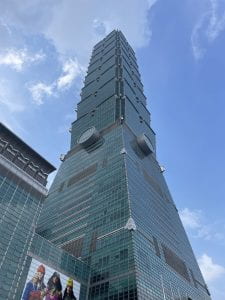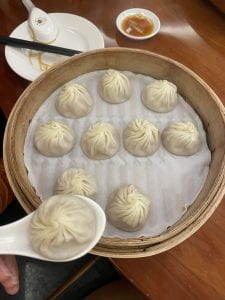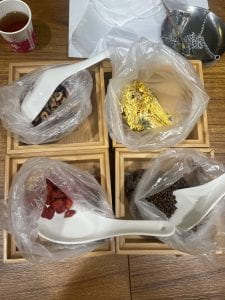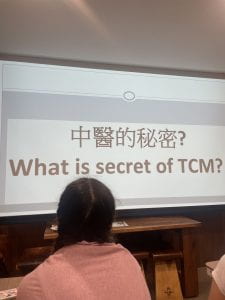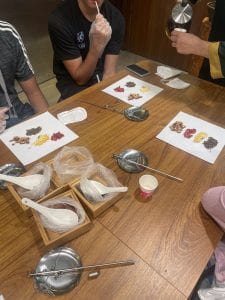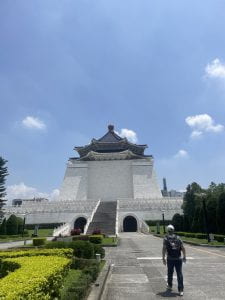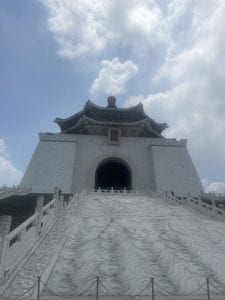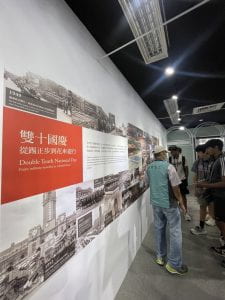by Kayleigh Ko:
On day 3, we started off our morning by getting a tour of the President’s house. Here, we covered a multitude of topics including Taiwan’s presidential history, the building’s architectural design, the Hakka aboriginal tribe, and Taiwan’s lively social history. All while enjoying riveting views of the grounds and an amazingly sweet tour guide, our group explored the intersectionality between the old and the new, getting an authentic taste of the road Taiwan traveled on leading up to its current state.
We then quickly drove to Chiang Kai Sheik’s, the founder of Taiwan, memorial to watch the changing of the guards. Comprised of an astoundingly large statue of Chiang Kai Shek in an even larger building, our group was able to see firsthand the austerity of the guards and the reverence towards Kai Shek. However, this place was mostly an amazing spot for pictures.
Next stop held one of the most anticipated places in our whole trip: Din Tai Fung. A world-wide renowned Dim Sum restaurant, Din Tai Fung was the topic of giddiness filled conversations months prior to the trip. Students were able to enjoy an array of dishes including the most famous fish, pork xiao long bao, as well as shrimp dumplings, spicy wontons, and more. With a near-bursting stomach, students traveled 86 more floors in a high speed elevator to the top of Taiwan’s tallest building: Taipei 101. With windows on all sides, students got an extensive view of the city.
Moving on from the more modern aspects of the city, our next stop was the Daily Health Chinese Herb Pavillion where we participated in a Traditional Chinese Medicine (TCM) workshop. Not only did we create our own medicinal herb tea with chrysanthemum flowers, red dates, gooseberries, and more, but we also learned of the crux of TCM practice: 平衡 (balance). Our teacher told us that all of these herbs, bat poop and mantis egg shell included, were all used to bring back the balance of our bodies. Furthermore, we incorporated a traditional Chinese scale to measure the four ingredients in our tea. Learning about 中药 (TCM), a significant component of Chinese traditional culture, and its holistic approach to health, was an extremely interesting experience that we can all apply back home.
Our last few sightseeing spots on this day were the Confucius and Baoan Temple. Each specific artistic piece in the architecture held a story that added to the overall purpose of the temple. In Confucius’ temple, we learned of his philosophy, tutoring programs, and legacy. His famous books regarding his teachings were the crux of Chinese education back then which has exemplified the continuation of his honor today. Just a few blocks away was the Baoan Temple where beautiful Bonsai trees, intricate paintings, and traditional architectural designs were. We learned that the long time history of this temple was affiliated with health for the elderly with free intermittent medicinal practices are held for elders. In this place, we saw many people praying for fruitful futures and constant health. Through these two temples, we saw the intricacies of traditional architecture, the story behind it, and how purposes of temples are continued to this day.
After a much tiring day, we traveled to a local pork and rice restaurant and enjoyed delicious foods. Before heading back to our hotel, we had a short time walking around the streets of the night market. Overall, today was a culmination of the examination of both modern and traditional Taiwanese life. We were able to get an extremely diverse yet authentic grasp of what life in Taipei, a city with a rich history, could look like.
